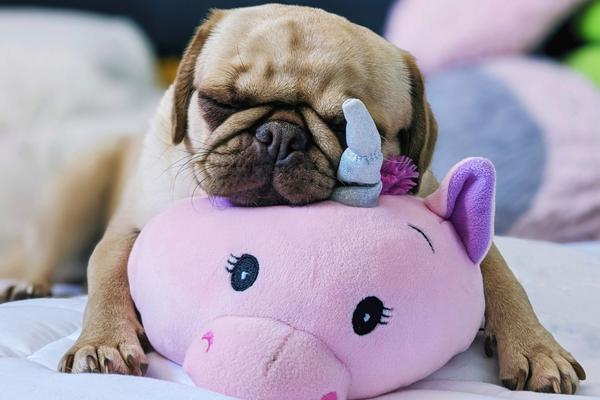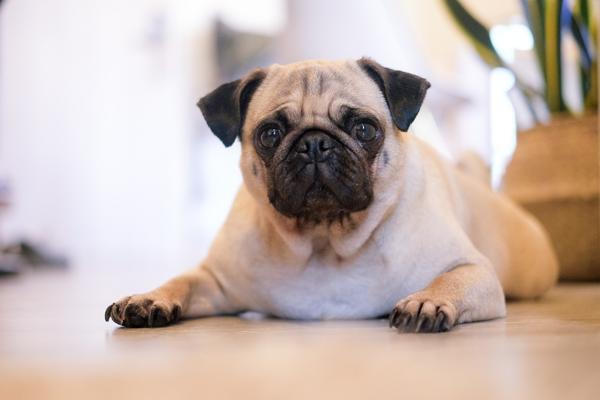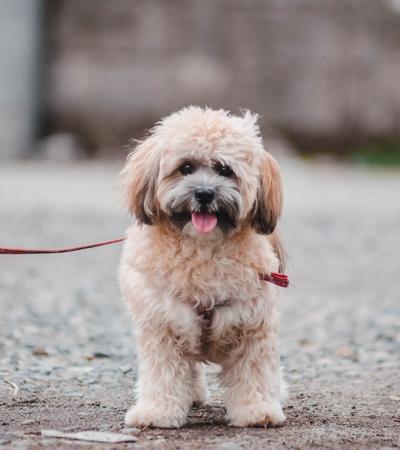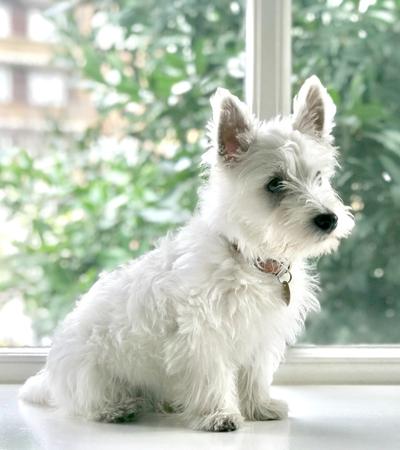Are Pugs Hypoallergenic Dogs?
Are Pugs hypoallergenic? No! Thanks to their short, smooth, glossy coat that sheds all year round — Pugs aren’t a hypoallergenic dog breed.
Pug Quick Facts

Having dog allergies can deflate your dream of being a dog parent, but what about a hypoallergenic dog? Does such a canine really exist?
The truth is no dog will be completely hypoallergenic. Having said that, there are breeds regarded as such — because they shed and/or drool very little or not at all, and have a coat that’s more like human hair than fur.
To read more, check out our article on What Is a Hypoallergenic Dog?
Pugs have a single coat that’s short, smooth, and glossy. They can come in various colors, with fawn being the most common. Considered quite high on the shedding scale, Pugs require regular brushing even though their coat is super short.
If you have your heart set on a Pug. Here’s a fact worth knowing — black Pugs tend to shed a lot less than other colors, but are classed as rare. The Apricot and silver colors are even rarer.
Do Pugs shed a lot? According to the AKC, Pugs are considered quite high shedders, and would be around an eight on a scale of one to 10. They shed all year round but do have a blowout of their coat twice a year during the autumn and spring.
Don’t be fooled by their super short coat as it will still shed — requiring considerable management all year round.

There is no way you can stop a Pug from shedding. They typically shed all year round and are not a great choice of breed if you suffer from allergies.
There are steps you can take to minimize the amount of fur they shed.
1. Brush Your Pug Regularly With the Right Tools
The first line of defense to help control the amount your Pug sheds is brushing — daily. This releases loose fur and helps to clear your home of unwanted hairs. It also maintains a strong bond between you and your pup. If your Pug has a double coat, it’s even more crucial as they’re known to shed more, especially with the season change.
While deshedding tools serve a purpose for many breeds, it’s not the best choice for a Pug. These typically thin wire brushes can get caught in those cute little rolls of skin and make the ordeal somewhat uncomfortable.
2. Wash With a Gentle Dog Shampoo
Pugs are notorious for their skin issues, they have sensitive skin, which can cause further problems if bathing with a harsh shampoo. Plus, their cute chubby rolls can cause chafing if not washed and dried with care.
Tub time doesn’t have to be a weekly routine. Once a month should be ample. This will help maintain the correct levels of oil in their skin and a healthy coat.
3. Give Your Pug’s Coat an Extra Boost by Adding Supplements
Diet is often something that’s overlooked when it comes down to shedding. Ensuring your Pug is on a highly nutritious meal plan will boost their skin and coat health. Plus, a diet that’s rich in omega 3 will help prevent any major skin issues.
With more research being known about the care of dogs, many pet parents are turning to dog supplements to offer alongside their diet. If you feel your dog’s food isn’t enough, you can opt for a chewable vitamin to boost their skin and coat.
There is no denying that Pugs are cute little balls of chub! They have those big, bold eyes that can melt your heart with one look.
And, while we’ve discussed that Pugs are not the best dog if you suffer from allergies, you may be interested in an alternative breed that’s classed as hypoallergenic.
A hypoallergenic Pug mix is a possibility, but bear in mind that a cross breed isn’t guaranteed to be reaction-free.
Here are a few of our favorite small hypoallergenic dogs that make loyal and loving pets. Why not take a look and see if you can find a keeper:
The American Hairless Terrier (AHT) has to be the most obvious on our hypoallergenic list — with no coat, there is no dander to spread around. This high-spirited pooch is amazing as a family pet and loves children. What’s more, the AHT is smart and trains easily — a perfect pup to love and still be allergy-free.
Although they may not be similar in Pug-like looks, these dogs have similar personalities in that they’re both full of energy and curiosity. Plus, size and weight are comparable — making them ideal for apartment living.
Border Terriers (BT) are known for their hypoallergenic wiry coats that hardly shed. Drooling is also minimal, which is another plus point for anyone with allergies. Originally bred as hunting dogs — making this breed easy to train and respond well to commands.
The BT has a loving and affectionate nature and is also a similar size and weight to the Pug. And, the similarities continue, both are good family dogs, although some supervision is required with a Pug when around children. Activity levels and exercise needs are also alike.
This sweet and innocent breed is ideal for a family pet. The Lhasa has a loyal and loving nature, making it a wonderful canine companion and also similar to that of a Pug’s character.
The Lhasa Apso breed has a beautiful coat that rarely sheds, and drooling is non-existent. However, this bow-wow may be more of a challenge to train, but is highly skilled and intelligent. One point to note, these beauties are known to bark in excess — but as their ancestors were trained as guard dogs, they could be following their original purpose.
Otherwise known as Westies, their coat is thick and has a low-shed factor. They have a cute appearance — with their black button nose and beady eyes, this tail-wagger resembles an old gentle being. Great with children and older adults, these little fluff balls are awesome for allergy sufferers.
The West Highland White Terrier is loving and mischievous, traits also seen in the Pug. These dogs require regular exercise, but running around the garden with the family will suffice too. However, Westies are known for being very vocal, so that may be something you need to consider if you have neighbors close by.
This faster-than-a-bullet breed is known for their activity levels. The Italian Greyhound has a muscular stature, which is on the slender side, as opposed to the chubby rolls of a Pug. They also need a lot of exercise to burn off that energy — but don’t be fooled, they love to cuddle on the couch just as much! Their coat is non-shedding, and they possess the natural desire to be neat and clean.
Given the physical contrasts, the Italian may not be the most obvious alternative for the Pug. Yet, they’re both in the toy group, small in height and weight, and don’t display aggressive behavior.
Pugs are cute little pooches, they have rolls of cuddly skin that make them just as loveable as their character. Their coat is typical of a non-hypoallergenic dog, and they will shed, leaving dander around your home — a risk for allergy sufferers.
But, don’t give up on your dreams of becoming a dog parent, many other breeds can keep those symptoms at bay. Fancy taking on the excitable Italian Greyhound or a fluffy, loving Lhasa Apso?
So, are Pugs hypoallergenic dogs? Sadly they aren’t, but there are many other hypoallergenic breeds that could fill that void in your family — and make your hearts complete.
Is a Pug a Good Family Dog?
Pugs are known to be sturdy loving dogs. They’re sociable with all family members and enjoy company from other canines. They have enough affection to go around all, and are deemed to be a great companion.
Are Pugs High Maintenance?
Pugs are relatively low-maintenance. Their barking factor is low and they can be little couch potatoes.
Can I Have a Pug if I Have Asthma?
If you suffer from Asthma, you need to be aware that owning a dog that sheds a lot can trigger attacks. It’s also important to note that this breed can also suffer from asthma.
Are Pugs Smart?
Pugs have funny little personalities. Known for their stubbornness and sass, their IQ places them below average on the intelligence scale, but they’re extremely adaptive. Check out our guide to the best Smart Hypoallergenic Dogs.
Are Pugs High Dander?
Pugs are known to have skin issues and are super sensitive to certain dog products. If their skin becomes too dry it can flare with an infection, which will create more dander. If this occurs their skin can become itchy and leave them scratching around the home more often — releasing more dander.
Are Pugs Ok for Allergy Sufferers?
Pugs are not the best choice of dog for those with allergies — they aren’t considered a hypoallergenic dog breed. They have quite a high shedding rate and so, will cause issues for allergy sufferers.
Are Puggles Hypoallergenic?
A mix between the Pug and Beagle, the Puggle’s parentage comes from two dogs that shed. So the answer is no











